Search Images
Browse Content (p. 1625)
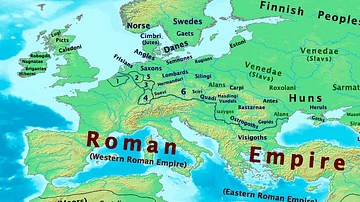
Image
Map of Europe, 400 CE
Map of Europe in 400 CE

Image
Maya Urn with Jaguar Figure & Skulls
A polychrome urn with a jaguar figure and skulls. Classic Maya, 600-900 CE, Guatemala. (Walters Art Museum, Baltimore)
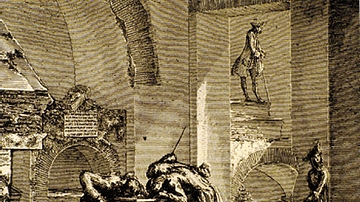
Image
Columbarium Being Stripped Bare by 18th-Century Treasure Hunters
From the 15th-18th centuries CE, the many columbaria that lined the consular highways leading out of Rome were plundered and destroyed. Consequently, one sees bits and pieces of them cemented into the walls of villas and palazzos all over...
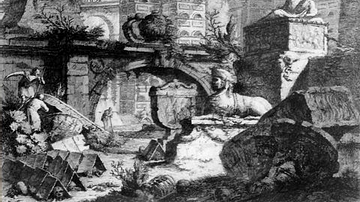
Image
Giovanni Battista Piranesi: Etching of a Columbarium
Although the title under this etching reads "camera sepolcrale inventata"—imaginary sepulchral chamber—it is likely based on the great columbaria for the slaves of Livia and Augustus, which, we know from other etchings, Piranesi did see (Ignoring...
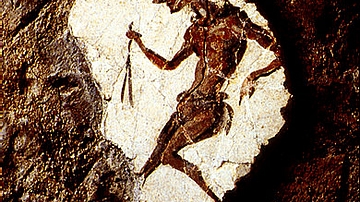
Image
Dancer with Conical Hat Holding Noisemaker, Columbarium Villa Pamphili
One finds such dancers (This one resembles a pop-eyed Pinocchio) in ancient Roman funerary art. Although they may well have apotropaic significance—i.e., to ward off evil—they fit in with the theatrical motifs found on walls in columbaria...
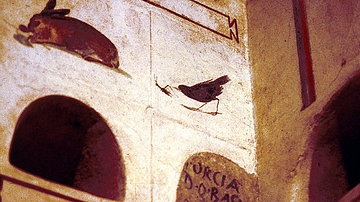
Image
Rabbit Eating Leaves, Blackbird Eating a Cricket, Columbarium of Scribonius Menophilus
Charming frescoes decorate the walls of this first-century CE columbarium, discovered in 1982 CE on the grounds of the Villa Doria Pamphili. Other wall paintings include fishermen, scenes from tragedy, musical instruments, dancers of death...
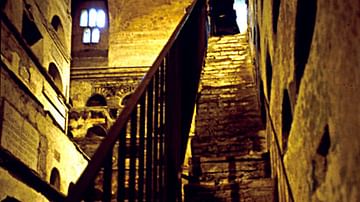
Image
Staircase: Columbarium 1 Vigna Codini
Staircase leading to the underground chamber of Columbarium 1, Rome. The central pillar supporting the ceiling is at left.
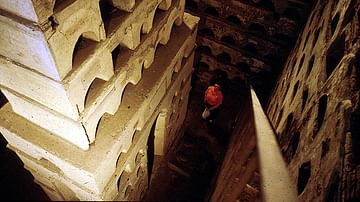
Image
View from Staircase of Central Pillar and Loculi, Columbarium 1, Vigna Codini
The loculi in the central pillar of this columbarium in Rome (discovered in 1940 CE) seem to have been reserved for the elected officers of the funeral institution (The name of one of them has been stamped several times into the wet stucco...
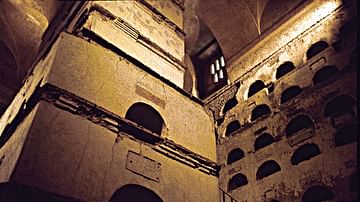
Image
Columbarium 1 at Vigna Codini: Loculi & Central Pillar
Columbarium, excavated in 1840 CE, on strip of land between Via Latina and Via Appia.
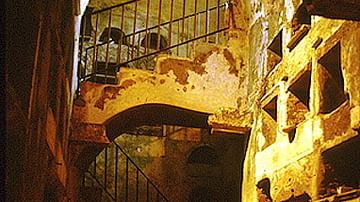
Image
Columbarium 3 at Vigna Codini: View of Double Staircase
This largely first-century CE columbarium in Rome, discovered in 1852 CE, was once lined with marble. It is very 'up-market' in that the epitaphs are all preoccupied with status, even though the deceased are slaves and freed slaves. It was...